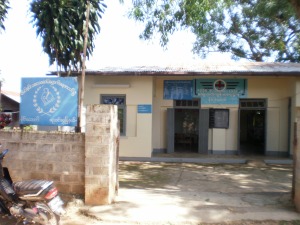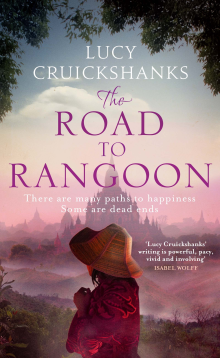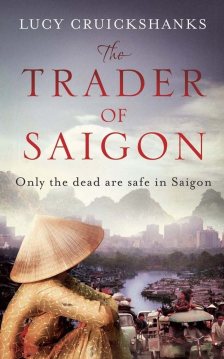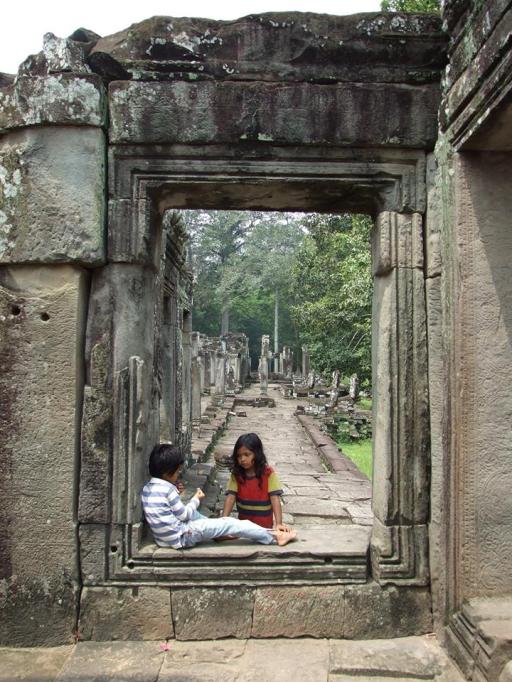My experience of pregnant travel in Myanmar
When I discovered I was pregnant with my eldest son, my trip to Myanmar was already booked. I was researching my second novel, The Road to Rangoon, and had been looking forward to going for months. This was my first pregnancy and I was nearing the end of a healthy first trimester, but more than one friend suggested the trip would be better postponed. It would be dirty, they said. The food would be dodgy. One even went so far as to suggest I’d be more likely to be involved in a car crash than at home. I couldn’t help feeling it was all a bit hysterical, but I did want to make sure that travelling was safe.
I began by searching the internet for accounts of women who had been to similar places, but I found very little reliable advice. Medical information focused almost exclusively on flying during the third trimester and visiting well-established Western resorts, not heading off the beaten track in developing countries.


Breathtaking temples of Myanmar
My midwife had never heard of Myanmar and had little to offer beyond a rather baseless “I wouldn’t eat the fish”. Having found myself needing hospital treatment in a Cambodian backwater a few years earlier, my main concern was access to emergency care. She arranged to bring my scan forward to check that the pregnancy wasn’t ectopic before I found myself in the wilderness, but gently reminded me that given my stage of pregnancy, miscarriage was largely indiscriminate and were the worst to occur, there would be nothing to do but ride it out, so it made little difference what country I was in.
I spoke to my GP, too, about the risks. I was lucky that my travel vaccinations were up to date from previous travels, but anti-malarials were clearly out. Avoiding mosquito bites was the best I could hope for, but again, facts were hard to establish. When asking which insect repellents were safe, for example, I was met with only a grimace and a shrug.
I found the lack of quality information frustrating, but what my midwife had said about miscarriage struck a chord. Though I had age and good health on my side, the whims of pregnancy – as all in life – are unpredictable. I’d learned nothing to convince me that my friends’ concerns were justified. I resolved to let the fates decide.
As it happened, there were a few things that proved less than ideal about pregnant travel. I had rotten sickness throughout my pregnancy and every flight (of which there were many) was spent with my head in a paper bag. The weather in Myanmar was stiflingly humid, the air thick with the scents of heaving markets and overflowing drains. More than one fish curry found its way into a less than pristine squat toilet before I’d left the restaurant as I glanced at the waiters and sheepishly muttered “It’s not you, it’s me.” It was manageable, however, if it at time slightly wretched. The concessions I made, such as watching what I ate, were not too different from those I’d made at home.
So would I make the same decision and travel again? Without a doubt, the answer is yes. It was high in the hills of rugged Shan State that my choice became fully vindicated. Until that point, I hadn’t told anyone I encountered that I was pregnant. I wasn’t showing much and I didn’t expect or want special treatment. This trip was not about me. It was for finding out about Myanmar. I was having a fascinating time but becoming increasingly irritated by how little progress my research was making. Myanmar is staggeringly beautiful, but troubled, its people made wary by decades of military dictatorship and civil war. I found it impossible to engage in any conversation beyond pleasantries and often felt like the worst type of tourist – detached and voyeuristic – and so far from experiencing the country’s true soul.
Whilst walking with a local guide, however, we stopped to chat to a family outside their home. They produced rice crackers and my guide asked to show us where they were made. The family politely agreed, waving us into their home, but I felt like I was intruding and hung back. The guide insisted, saying the family would appreciate a few kyat in payment, and so reluctantly I went inside. The weather that day was blistering, pushing forty degrees, and the woman at the stove had a belly that was ready to burst. She was eight months pregnant, I discovered, sitting on the floor and dusty with ashes, still working at least a ten hour day.


My new friend and the house where she’d give birth
Shocked, I blurted out that I was pregnant too. The faces of the family instantly changed. Their smiles broadened, reaching their eyes for the first time. I was ushered to a seat and bombarded with questions. They were suddenly interested in me, genuinely so, and we ended up spending the afternoon there, sharing tea and stories about our lives. The woman told me how she would give birth at home, in the room where she worked with her mother and grandmother at her side, more than two hours by boat from the nearest medical facilities. When I left, I felt such a mix of emotions; elation that I’d forged my first real connection, and guilt for what privileged healthcare I received at home.
I mentioned my pregnancy much more often after then. I realised that being pregnant disarms people. It’s a leveller. It creates a connection between lives that are otherwise so different that the gap appears unbridgeable, starting conversations and finding common truths. It gave me a new glimpse into the generosity of human nature, too. There was the restaurant owner who sat at my table and went through his menu, telling me what he thought should eat for a healthy baby. (Stay away from bananas, he warned. Bad luck!) There was the taxi driver who insisted on turning off the meter and letting me sit in his air conditioner cab while a particularly heady bout of nausea passed. I was even given email addresses by people I met – a temple guide in Bagan who took me on a detour to see a local maternity hospital and a primary school teacher I met in a Mandalay café – and asked to send pictures when the baby was born. These are correspondences I maintain today. Everywhere I went, more than just providing a service or going through the motions of civil conversation, people cared. They were open and curious. They wanted to chat. Travelling pregnant was deepening my experience beyond anything I’d foreseen.

A remote maternity clinic in Shan State
I’ve often thought about the woman I met in Shan State. My son’s birth had complications and I was profoundly grateful for the care I received, and to not to have been in a remote hillside hut. I’ve since learned that more than 99% of newborn deaths occur in low- and middle-income countries, especially in Africa and South Asia, which includes Myanmar. It’s an appalling statistic. I hope she faced fewer issues than me. Whatever the outcome, meeting her strengthened my resolve to write about the subjects I do; the underdogs in precarious societies, those who are forced into a life of hardship through nothing more than the lottery of birth. This isn’t about me, I had thought to begin with, but I learned that being more willing talking about myself helped me find out about others, too. I’ll remember that on future travels, whether researching or relaxing, pregnant or not.
I’ve dedicated The Road to Rangoon to my son. It felt only fair since he’d taken so much of its journey with me, from that first scorching Burmese escapade, through draft and redraft as he slumbered by my desk. I’ve no doubt that without him my experience in Myanmar – and the novel that followed – would not have been so rich.

Sunset over Inle Lake


















